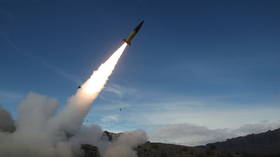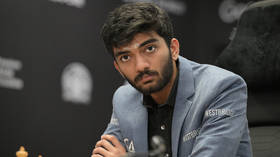How ‘missile man’ and ex-President APJ Abdul Kalam’s 2020 vision propels new India
Two decades ago, the late nuclear scientist and youth icon published his 2020 vision of a freer, more developed and stronger India. 2020 is here. We examine how much of his dream has taken shape on the ground.
The number 2020 has a ring of perfection to it. The digits are perfectly balanced, and in ophthalmology, it means perfect vision.
When India’s then-chief scientific adviser and later president, APJ Abdul Kalam, headed a committee on India’s Vision 2020 at the turn of the millennium, he wanted to see his nation achieve this balance, perfection, and impetus for the future.
Kalam – India’s missile man and the main architect of the 1998 Pokhran II nuclear tests – remains one of its greatest icons even after his death in 2015. His progressive dreams, his deeply Indic and secular thinking, and his ability to inspire continues to capture the imagination of millennials.
His vision for India is not lofty and abstract. It is specific, pragmatic and achievable for a nation aspiring to be among the elite trillion-dollar economies with a gigantic population catching up with China’s.
Whether India leads in positively shaping this planet’s future will depend on how robustly it arrives at the destination Kalam had in mind.
In 2020, some of it has been achieved, but much is left.
Also on rt.com Dear mainstream media, do you really think Modi is behind all India’s problems?The first vision: Freedom
In his famous speech at the Indian Institute of Technology, Hyderabad, on May 25, 2011, Kalam outlined three central visions.
“In the 3,000 years of our history, people from all over the world have captured our lands, conquered our minds. Yet, we have not grabbed their land, their culture, their history and tried to enforce our way of life on them. Why? Because we respect the freedom of others. That is why my first vision is that of freedom,” Kalam said. “I believe that India got its first vision of this in 1857, when we started the war of Independence. It is this freedom that we must protect and nurture and build on. If we are not free, no one will respect us.”
India is a free nation, but has is achieved complete freedom internally?
India has a largely free press which can openly call even Prime Minister Narendra Modi all sorts of names, including ‘fascist’, every day. In which ‘fascist’ state is that possible?
India has civil liberties and has junked quite a few colonial-era laws. For instance, in 2018 it decriminalised homosexual acts under Section 377 of the India Penal Code, and the next year it outlawed ‘triple talaq’ or ‘instant divorce’ under Muslim Personal Law. But much more remains to be done on LGBTQIA rights, keeping multiple wives under Muslim Personal Law, or implementing the law banning manual scavenging.
The second vision: Development
“For fifty years we have been a developing nation. It is time we see ourselves as a developed nation. Our poverty levels are falling. Our achievements are being globally recognised today,” Kalam said in his 2011 speech. “Yet we lack the self-confidence to see ourselves as a developed nation, self-reliant and self-assured.”
India has achieved much development, but has also faltered.
Kalam’s vision document for 2020 envisaged India to be among the top five nations in terms of GDP. It is the fifth largest economy now. According to the United Nations Development Programme’s 2019 Multidimensional Poverty Index, India lifted 271 million people out of poverty within a decade. Mobile phone penetration is approaching 100 percent, and 31 percent of those are smartphones.
Structural reforms like a uniform Goods and Services Tax or the Insolvency and Bankruptcy Code have been put in place. India jumped from a ranking of 142 in 2014 to 63 in 2019 in the World Bank’s ‘Ease of Doing Business’ rankings.
But the economy has slowed because of global headwinds and domestic investor sloth. There are accusations of ‘tax terrorism’ and many reports show jobs are drying up. Keeping the development momentum is crucial to realising Kalam’s dream.
Third vision and a resurgent India
“India must stand up to the world. Unless India stands up to the world, no one will respect us. Only strength respects strength,” Kalam said.
India has achieved perhaps the most on this. Modi’s front-foot diplomacy has overwhelmingly won India friends. The US, Israel and Japan are extremely close. The relationship with traditional ally Russia remains intact. Relations with Arab countries have reached a surprising new high and Iran is still a friend. From Africa to islands in the Indian Ocean, India has attentively built new ties.
Problems with China and Pakistan have been dealt with from a position of strength. India’s military resistance to China at Dolkam, its surgical strikes and Balakot air raids against Pakistan showed it would respond to force with force.
Much more remains to be achieved. A board at the Kalam National Memorial at his birthplace, Rameswaram, serves as a reminder: “Dream is not what you see while sleeping. It is something that does not let you sleep.”
Think your friends would be interested? Share this story!
The statements, views and opinions expressed in this column are solely those of the author and do not necessarily represent those of RT.














